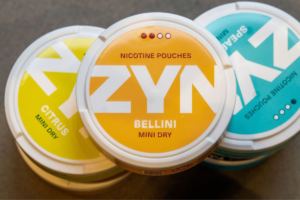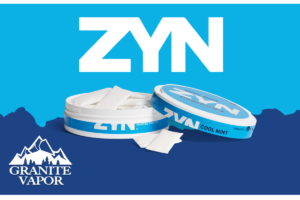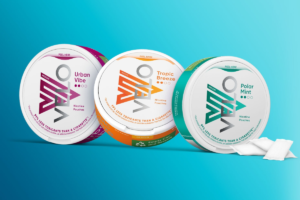Camel Snus is a product made by R.J. Reynolds Tobacco Company that has set the stage for the smokeless tobacco market and public health debates. To this end, the article looks at what it constitutes, how it is used and where it is positioned in the market vis-à-vis other forms of tobacco items. Besides depicting its chemical profile and user experience, it will as well briefly articulate on regulatory framework as well as public health concerns that come with its consumption. In addition, we will review consumer preferences and marketing approaches to determine why products like Camel Snus are popular among customers. It serves as an initiation into the world of smokeless tobacco products for stakeholders who want to understand their complexity within the evolving tobacco industry landscape.
What is Camel Snus?
Understanding the Structure of Camel Snus
Camel Snus is a smokeless tobacco product which is pasteurized and then placed into small pouches that resemble tea-bags. Unlike traditional snuff or chewing tobacco, SSnus does not require spitting, making it a low-profile choice for nicotine intake. The components of Camel Snus include the following:
- Tobacco:this refers to specially selected leaves from tobacco which are subjected to pasteurization so as to lower harmful microorganisms and preserve taste.
- Water : it is added in order to moisten the product so that when placed inside the mouth would release nicotine and flavors.
- Salt : it acts as a preservative and also enhances the overall flavor profile of the commodity.
- Flavors: Different types of flavoring agents are added for developing different tastes such as mint, fruit blends, etc., according to consumer preferences.
- Humectants :chemicals like propylene glycol maintain moisture levels in SSnus thus ensuring uniformity of material.
- pH Adjusters : substances including sodium carbonate introduce bodily fluid pH levels necessary for optimized delivery rate of nicotine and enhancement of user satisfaction.
These ingredients combined in specific proportions make up its unique characteristics ranging from its taste profile through its usage. It is intended to provide an alternate way of delivering nicotine unlike conventional smoking or chewing tobacco patterns.
Exploring Various Tastes of Camel Snus
In order to satisfy all the customers’ preferences, while still maintaining its quality and brands experience, camel snus comes in different flavors. Here is a brief look at the other available flavors:
- Frost: The taste is characterized by an intense minty flavor that leaves you with a cool sensation on your tongue plus the nicotine feels. Many smokers claim they prefer this as it gives them a cooling effect.
- Winterchill: For those who enjoy more biting mint sensations, winter chill delivers a stronger wintergreen taste that reminds one of traditional chewing tobaccos without any need for spitting.
- Mellow: Mellow works great for individuals who wish to have their smoking experience less pronounced especially when it comes to sweetness through a light and mild flavor. It is not as strong as mint variations.
- Robust: This suits users looking for bolder richer flavors. There are some spices present in deep tobacco flavor so that it could provide customers, desiring genuine tobacco experiences with their preferences.
- Mint: The Mint flavor combines the clean notes of mint with underlying tobacco character for a balanced fresh taste; running between Frost and Winterchill in terms of intensity.
Consistency and satisfaction are key considerations when crafting each flavor variety of Camel Snus. Natural and artificial flavor combinations ensure these profiles through enhancing nicotine experience without overpowering one’s senses. This range of flavors ensures that clients can select what they like most hence enjoying smokeless tobacco discreetly given by Camel Snus brand.
Comparing Camel Snus and Other Dip Products
There are a number of ways in which Camel Snus is different from other smokeless tobacco products such as its level of wetness, taste variety and nicotine delivery system. Unlike traditional chew products that necessitate spitting, the spit-free nature of Camel Snus makes it discreet and user friendly in different environments.
Camel Snus has less moisture content than traditional moist snuff products. The drier state allows the product to have a longer shelf life while reducing the immediate emission of nicotine thus offering a more gradual experience to the consumer. Additionally, compared to other smokeless tobacco processes which use fermentation, Camel Snus employs unique pasteurization whereby levels of tobacco specific nitrosamines (TSNAs) are reduced; these constituents are known to be harmful.
The nicotine delivery system of Camel Snus ensures prolonged absorption rather than immediate and intense nicotine rush found in substances such as nicotine pouches or dip tobacco. It is meant to satisfy your cravings without overwhelming you with too much nicotine at once.
When it comes to flavor diversity, Camel Snus offers more flavors that cater for different tastes compared to some conventional smokeless tobacco options which emphasize on limited flavor profiles predicated on naturally occurring flavors from tobacco itself. This caters for wide range of consumers especially those who would like alternatives to smoking or any other way of consuming nicotine.
Lastly, many conventional smokeless tobaccos differ significantly from the packaging and design used by Camel Snus. These compact cans are convenient and inconspicuous designed for people looking for low-profile smokeless tobacco product suitable for social interactions and work environments that can be easily carried around.
Through differentiation based on these factors, Camel Snus presents itself as an option within smokeless tobacco industry targeting a segment that prefers private but tasty experience with less harshness in its nicotinic content compared with others.
How Does Camel Snus Differ from Swedish Snus?
Characteristic Differences between Camel Snus
In several very important ways, Camel Snus is different from Swedish Snus. These differences contribute to its unique place in the smokeless tobacco market. Firstly, Camel Snus’s formulation places a focus on various flavor profiles other than just the traditional tobacco flavors. This creates diversification that broadens its customer base to include those who want unconventional smoking substitutes.
Secondly, Camel Snus nicotine delivery system is designed for sustained absorption. It is different from Swedish snus that usually results into sharp nicotine peak hence providing a smooth experience that can relieve craving without intense initial burst of nicotine levels. This makes it ideal for first-time users who are looking to switch from smoking cigarettes to using smokeless tobacco products.
Additionally, there is less of such nitrosamines in the product which are believed to be one of the dangerous elements found in other types of tobacco. Such decline appeals to customers worried about dangers associated with consumption of smokes.
Lastly, portability and discretion were taken into account when designing packaging for Camel Snus. The small and slim tins used are more discreet and also made easy to use in different occasions like workplaces or social gatherings where normal forms of moist snuff may invite unnecessary attention.
To sum up, tailored taste options, an exclusive nicotine distribution system as well as lower detrimental constituents and unpretentious consumer-friendly packing serve as distinguishing features carried by the brand- names “Camel snus”. Taken collectively these specifics underscore Camel’s approach to smokeless nicotine products’ industry innovativeness therefore making it preferable among those who would rather not take up traditional cigarette smoking or other forms of nicotine usage within this particular sector.
Comparing Nicotine Levels in Camel Snus and Swedish Snus
The nicotine level of both the Camel Snus and Swedish Snus is a decisive factor among consumers who use these products as quit smoking aids. In general, Camel snus is designed to have a nicotine level that gives a satisfying experience without an intense peak, this aligns with the product’s slow nicotine absorption strategy. This quality makes it distinct for former smokers or those new to smokeless tobacco who aim to regulate their intake.
On the other hand, regular Swedish Snus comes in different strengths of nicotine levels from regular to extra strong varieties so as to suit various preferences and tolerance levels. The amount of nicotine in Swedish Snus across brands can vary greatly, with contents typically going up from 8 mg per portion to more than 22 mg per portions on stronger types. These differences underscore the adaptability of Swedish Snus to different consumer needs by providing options ranging from mild and entering significantly concentrated dose.
A comparison shows that the average concentration of nicotine in Camel Snus is about 8mg/gm which despite being sufficient enough to satisfy craving for nicotine lies at the lower end of spectrum if compared with many of Swedish snuff products. Such a low rate illustrates that camel snuff positions itself as an intermediary product for people seeking relief from high dependency on nicotine.
In terms of quantity, variation in nicotine content reflects two target markets of Camel Snus and Swedish Snus. Comparatively, while the lower-nicotine content gradually released by camel snuff appeals towards smokers or novices into smokeless tobacco, swedish snuff serves much wider audiences including those who need more weighty doses of nicotine.
Finally differentiating point between camel snuff and traditional swedish one is its respective nicotinica concentration levels; this mirrors strategic positioning within smokeless tobacco market by camel snuff unlike other alternative solutions for smokeless tobacco consumption. Such differentiation emphasizes that smokeless tobacco products are called to be flexible with regard to individuals and thus re-iterates the necessity of individual product choice relating to personal nicotine intake preferences and objectives.
Swedish Snus Manufacturing Process and Quality Control vs Camel Snus
Manufacturing process of the two brands also differ, reflecting their position in the market and regulation environment. In line with Swedish food act, Swedish snus production requires high level control of ingredients as well as manufacturing procedures. This involves using carefully selected tobacco leaves and exclusive pasteurization technique which minimizes harmful microorganisms, thus making it safe for use and gives it a unique taste. However, Camel Snus adheres to US manufacturing guidelines but does not employ similar rigorous procedure in pasteurization. Instead, a fermentation process is used that creates different flavors and possibly varying levels of another carcinogen tobacco-specific nitrosamines (TSNAs).
Studies on TSNAs have revealed that Swedish snus usually has low TSNA levels compared to other smokeless tobacco products including those manufactured within America. Forinstance,a research led by Journal Agricultural and Food Chemistry indicated that TSNA concentration was significantly reduced through pasteurization during quality control measures applied in the manufacture of Swedensnus. The emphasis on reducing harmful constituents through specific processing techniques demonstrates a commitment to quality control in Swedish snus production, thereby setting an industry benchmark for safe products as well as consumer health concerns.
Are There Risks Associated with Using Camel Snus?
Analysing the Health Risks of Using Tobacco Products like Camel Snus
Despite the global spread of smokeless tobacco products including Camel Snus, there are still serious questions about their safety and long-term health effects. According to the World Health Organization (WHO), every form of smokeless tobacco is a carcinogen—meaning that using them is inherently dangerous. Studies have consistently shown that users of these products are at an increased risk of developing oral, esophageal and pancreatic cancer. For example, fermentation employed in stuff like Camel Snus may result in higher levels of TSNA’s(a kind of TSNA). In fact, research published in Nicotine & Tobacco Research Journal found out that concentrations of TSNAs could be directly linked with elevated risks for cancer among users. Moreover, other negative health outcomes related to smokeless tobacco use include gum disease, tooth decay, and potential nicotine dependence which only complicates the public health implications further. This data indicates a vital necessity for strict regulatory control and extensive consumer awareness on dangers associated with smokeless tobacco use.
Understanding the Potential Applications of Camel Snus
Camel Snus and other smokeless tobacco products like it are known to pose health risks; however, it is important to objectively comprehend their possible use in different settings. Therefore, we highlight and discuss such uses vis-à-vis available data and research findings:
- Smoking Cessation Aid: According to some studies, Camel Snus and other smokeless tobacco products may help smokers give up cigarettes safely. This idea is examined by an article in Journal of Environmental and Public Health which finds that smokeless alternatives to cigarettes for nicotine delivery can thus serve as a lower-risk option for some smokers who want to quit smoking. Nonetheless, comprehensive further studies have to be conducted on the safety and efficacy of this approach.
- Controlled Nicotine Replacement Therapy: In highly controlled situations, one may consider Camel Snus as nicotine replacement therapy (NRT). Unlike other NRT products like patches or gum, smokeless tobacco can provide more ritualistic elements that are probably more familiar with users. Theoretically this could assist in increasing adherence among users for their nicotine replacement strategies but again the potential benefits must be weighed against the clear risks available but only after being used under strict medical supervision.
- Research and Development in Nicotine Delivery Systems: The technology and chemistry underlying production of Camel Snus provide insights into stabilizing nicotine while delivering it. Consequently, this study may lay a foundation for development of harm reduction strategies aimed at enhancing public health through provision of alternative options to combustible cigarettes… It might particularly apply when developing non-combustion-based nicotine products that might lower incidences of cancer or so associated diseases.
In conclusion, although there are specific contexts where potential applications of camel snus et al should be considered along side its well-documented health risks; nevertheless, they need careful balancing with considerations concerning major health hazards already proven beyond reasonable doubt. Any application must follow research stringency, regulatory frameworks ensuring safety and efficacy, as well as adherence to healthcare ethics.
Evaluating the Impact of Camel Snus on Consumer Health and Behavior
Several key factors need to be looked at closely when doing an evaluation on how Camel Snus affects consumer health and behavior:
- Nicotine Addiction: One major issue is the ability of Camel Snus to maintain or even increase nicotine dependence. It should be checked if using smokeless tobacco products like Snus leads to reduced cigarette consumption over time or only provides additional nicotine, thereby impeding cessation efforts.
- Toxicological Profile: The chemical composition such as nicotine, TSNAs (tobacco-specific nitrosamines) and other compounds that are either carcinogenic or toxic found in Camel Snus should be examined. These may be helpful to consider in relation to risk reduction vs traditional smoking products, other NRT options for example.
- Consumer Behavior and Perceptions: Understanding how consumers perceive harm reduction through which they use Camel Snus is important. How people make choices about adoption of this product, transitioning from regular cigarettes to Snus and if it can cause new non-smokers or young people start taking up nicotine with Snus involved.
- Public Health Impact: Assessing these wider public health consequences requires population-level investigations into whether reducing smoking rates could result from having access to snuff-like substances such as snuff; rather than them being a gateway towards non-smokers’ addiction of nicotine. Furthermore, examination of marketing influences and government policies would provide further insights regarding consumer activities as well as population health outcomes.
- Regulatory and Ethical Considerations: In accordance with public health goals, responsible manufacturing, marketing, distribution of Camel Snus requires strict regulatory oversight. In order not to increase the overall number of addicts due to innocent advertisement targeting vulnerable groups ethical thinking must control advertising strategies.
In conclusion a comprehensive assessment on its addictive potential as well as toxicological risks associated with the product, perception and behaviour changes by consumers’ implications for public health related concerns because manufacturers’ & regulators’ ethical responsibilities can be viewed from a holistic approach. This kind of analysis should be based on empirical evidence, public health priorities and ethics to ensure successful achievement of harm reduction goals.
Exploring Different Varieties of Camel Snus
An Appraisal of the Various Tastes Presented by Camel Snus Products
Camel Snus products are made in different flavors designed to serve various consumer preferences and adhere to restrictions on flavored tobacco products. Below is a list of available range of flavors:
- Frost : It is a main snus in cool mint flavor. This is for people who crave intense refreshing taste.
- Winterchill :A more robust mint flavor than Frost, Winterchill allows intensifying the mint experience for those who want it more pronounced.
- Mellow : It contains less sugar, has lighter taste compared to other brands vanilla hints may be found in it. It targets mostly people who prefer milder tastes instead.
- Robust : This brand has a richer tobacco flavor that can be described as being full bodied; meant especially for snuts users who love a classic taste of tobacco without any addition of flavours.
Mint is almost like Frost but with a distinct flavour profile characterized by a balanced minty flavour. It can be bought by customers who have a preference for conventional mint.
Spearmint : This flavor represents one side of the spectrum that provides sweeter and candy-like experiences than other superior varieties such as herbs or spices that are commonly used to prepare food so as to make them bitterer still when chewing gum is not added much sugar. Thus, this variety appeals to those individuals opting for sweeter alternatives.
Each variant’s target group depends on customer preference and market research conducted prior its development. The development process entails thorough testing and compliance checks which guarantee safety and quality standards met by each flavor. In conclusion, Camel Snus’s variety of flavors reflects the company’s strategic approach towards expanding its product line while also appealing to wider audience through compliance with complex regulations overseeing flavored tobacco production within different countries.
Comparative Analysis of Camel Snus with Other Reynolds Tobacco Brands
In the competitive market for tobacco products, Reynolds American Inc. offers a range of brands beyond Camel Snus that are designed to cater for different kinds of adults who consume tobacco. It is through comparative analysis between other Reynolds tobacco brands and camel snus that can make one understand strategic placement and positioning in the market place.
- Vuse:This leading brand in electronic vapor product category has a unique selling point which is its technological advancement and many flavors to choose from. Vuse, however, differs from Camel Snus because it offers an alternative for people who are interested in using e-cigarettes but not cigarettes with no tobacco at all. It is intended to deliver consistent experience through its precision heating technology and controlled power delivery system.
- Natural American Spirit: On the other hand, this brand is known for producing organic or additive-free cigarettes as opposed to those marketed by Camel Snus. While Camel Snus targets consumers looking for flavored smokeless tobacco options, Natural American Spirit appeals to those who prioritize purity and natural ingredients when smoking.
- Grizzly :Grizzly dominates the moist snuff niche as it is positioned as a number one brand among all smokeless categories unlike an average smokeless product like camel snus which has just one type. Grizzly comes in various forms such as long cuts and pouches accentuating strong and full-bodied taste of tobacco. It is mainly tailored towards individuals who have preference for traditional forms of moist snuffing.
- Pall Mall:Unlike a smokeless item like Camel Snus, Pall Mall caters to conventional smokers pursuing value-priced cigarettes that come with extended burning time aimed at prolonging smoking pleasure. The pall mall provides a more cost effective solution than cigarette smokers who need value as well as quality within their choice unlike camelsnus which does not contain any nicotine.
Each brand within Reynard’s portfolio serves distinct market segments within the tobacco industry by leveraging unique product attributes and positioning strategies that satisfy the varied demands of adult tobacco users. The rich assortment of flavor offerings and smokeless convenience by Camel Snus highlight its unique value proposition amidst the range of tobacco products Reynolds offers.
Consumer Preferences and Feedback on Camel Snus
Camel Snus has been revealed through consumer research and market analysis to have distinctive preferences as well as a number of feedbacks. Younger adult group between the ages of 21 and 35 is particularly fond of them. Most people in this demographic group like the modern look packeting and the way it can be used inconspicuously when smoking tobacco is not allowed.
From a feedback standpoint, users have expressed high satisfaction with the product’s convenience and lack of smoke, which aligns with growing health consciousness and indoor smoking restrictions. However, there is a segment of consumers expressing concerns about the health implications of tobacco use, including smokeless products, indicating the importance of clear communication regarding health risks and benefits.
These findings are supported by sales data that show an increase in its market share among smokeless tobacco brands especially in urban areas where population concentration tends to be much higher than in rural areas. This implies that by focusing on taste, convenience and lifestyle alignment; Camel Snus advertising strategy resonates with their target consumer segment.
In summing up, flavor diversity becomes very appreciated among those who consumes Camel Snus and also they highly value how easy is it to get such a product. Therefore constant surveys among customers are essential for understanding all changes at the market place at once for catching up with these trends without losing one’s significance within such a competitive field like diversification process behind smokeless tobacco production.
Reference sources
- What is Snus? A Complete Guide – Northerner U.S. Source This guide explores the various types and flavors of SSnus, including its strength and nicotine content. It provides a basic understanding of what SSnus is.
- Where is Snus Popular? – NortheSnus’sr U.S. Source This articlees the legality of SSnus in different countries and its popularity. It gives insights into the global acceptance and usage of SSnus.
- R.J. Reynolds Tobacco Company Briefing Materials – FDA Source This document provides a history of Camel Snus and its usage in Sweden since the early 1800s. It is a good source for understanding the historical context of SSnus.
- An Assessment of Camel Snus Abuse Liability – HHS Digital Media Source This research paper examines smokeless tobacco use and suggests users do experience withdrawal. The information is relevant for understanding snus’s potential risks and effects.
- Snus: A CSnuselling Harm-Reduction Alternative to Cigarettes – Harm Reduction Journal Source This journal article discusses the potential of Snus as a harm-Snusuction alternative to cigarettes. It provides a perspective on the potential benefits of Snus.
- A RandomiSnus Clinical Trial of Snus Examining the Effect – NCBI Source This study outlines the limitations and potential biases in research surrounding Snus use. It helps understand the complexities of studying snus effects.
- How Snus Works – HowStuffWorks Source This article explains how Snus is made anSnusts pros and cons. It’s insightful for those interested in Snus’s production process and effects.
- ReceptiviSnusto Taboka and Camel Snus in a U.S. test market – NCBI Source This research paper examines the American market’s receptivity to Snus, providingSnusluable information on its acceptance in the U.S.
- Characteristics of “American Snus” and Swedish Snus – Oxford Academic Source This article compares the characteristics of American and Swedish Snus, offering Snusights into regional variations of the product.
- R.J. Reynolds Tobacco Company’s Application for Six Camel Snus – UCSF Source This source examines the appeal of Snus to adolescSnuss and the likelihood of youth initiation. It’s crucial to understand the potential impacts on younger demographics.
Frequently Asked Questions (FAQs)
Q: What is the difference between Camel Snus and other oral tobacco products?
A: The primary difference between Camel Snus and other oral tobacco products is its processing and usage method. Unlike traditional chewing tobacco or snuff, Camel Snus is a pasteurized, smokeless, and spitless tobacco product designed to be placed under the lip. It’s part of a category called Snus, originallSnusrom Sweden, known for its discreet use. Camel Snus, produced by British American Tobacco, is finely ground and comes in various flavors, setting it apart from other oral tobacco products.
Q: How has Camel Frost contributed to the popularity of Camel Snus in the USA?
A: Camel Frost, a menthol-flavored version of Camel Snus, has significantly contributed to its popularity in the USA. Its refreshing flavor and distinct packaging appeal have attracted many users, especially younger adults, making it one of the leading flavors. Its success mirrors the broader trend of flavored oral tobacco products gaining traction in the US market. This version’s success has helped establish Camel Snus, distributed since 2006, as a familiar brand among Snus and tobaccSnussers in the USA.
Q: Are Camel Snus products available at lower prices and with US shipping through the Northern US?
A: Yes, Camel Snus products are available on various platforms, including The Northerner US, known for offering a wide range of Snus and other Snusacco products at ✔ low prices ✔ US shipping. Customers can find an assortment of flavors and types of Camel Snus, making it convenient for users in the United States to purchase these products online. Always confirm the latest pricing and shipping policies directly on The Northerner’s website to ensure accuracy.
Q: What substances do Camel Snus products contain, and how do they impact health?
A: Camel Snus products contain nicotine, which is a highly addictive substance, along with various flavorings and other additives. The health impacts of Camel Snus and similar oral tobacco products are still under scientific and surveillance scrutiny. Studies, including those like the PATH study, examine their relative harmfulness compared to smoking. While some argue that snus products may be a less harmful alternative to cigarettes, they still pose health risks, including exposure to chronic conditions. It’s essential to review the latest literature and scientific findings to understand their health implications fully.
Q: Has British American Tobacco modified the product label or contents of Camel Snus based on regulatory or consumer feedback?
A: British American Tobacco, like other companies in the tobacco industry, periodically reviews and, if necessary, modifies product labels and contents in response to regulatory guidelines, scientific research, and consumer feedback. Changes might pertain to health warning labels, ingredient lists, or portion sizes to ensure compliance and address consumer health concerns. Any significant modifications are usually reported through official channels, press releases, or updates on their product’s packaging and marketing materials.
Q: What are the typical portion sizes for Camel Snus, and how do they compare to other Snus products?
A: Camel Snus is typically available in small, discreet pouches tailored for ease of use. The product is designed to be slim and fit comfortably under the lip, offering a spitless experience. Compared to other Snus products, mainly those traditionally used in Scandinavia, Camel Snus portion sizes may be similar but are often designed to cater to the American market’s preferences, focusing on convenience and discretion. Portion sizes can affect the nicotine experience, with Camel Snus aiming to offer a satisfying yet manageable nicotine exposure.
Q: With Camel Snus being on the market since 2006, how has consumer usage among adults and youths evolved?
A: Since its introduction to the US market in 2006, Camel Snus has experienced varying use levels among adults and youths. Initially marketed as a new, safer form of tobacco usage, it did see interest from smokers looking for alternatives. However, its adoption among youths is noteworthy, as flavored varieties like Camel Frost have become popular. Surveillance studies and statistical analyses, including those from the PATH study, indicate fluctuating patterns of use, pointing to the need for ongoing monitoring and possibly stricter regulations to prevent oral tobacco products from becoming a prevalent habit among the younger population.
Q: How does the fermenting process of Camel Snus differ from other snus or tobacco products, and does this affect its flavor or safety?
A: The fermenting process of Camel Snus, more accurately referred to as pasteurization, is a critical distinguishing factor from other oral tobacco products. Unlike the fermentation process used in traditional Snus, which invSnuses a curing process with heat application, Camel Snus undergoes a steam pasteurization process. This method helps reduce certain harmful microorganism levels, potentially making it a safer option. However, this process primarily aims to stabilize the tobacco and enhance the flavor profile of the product, maintaining a consistent taste across different batches. Whether this makes Camel Snus safer than other products continues to be discussed in the scientific community.












